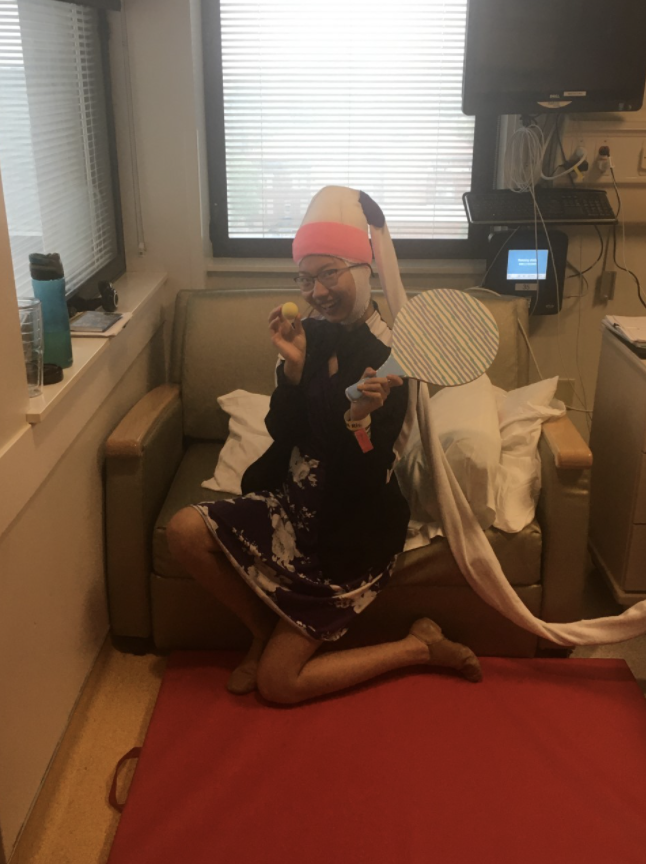Getting to the Bottom of Epilepsy: Stereo EEG
Getting out of bed for the first time and playing ball.
Waking up early to be at the hospital at 5 A.M, check-in at 7 A.M. Then head into the pre-surgery room. The doctors are distracting me by telling me what is going to happen when the nurses are trying to find a good vein to poke my IV in using the ultrasound.
My family and I have to wait until an operating room is empty.
Before I get the surgery I have to give a COVID-19 test and it must be negative at least 3 days before the visit. However, this time we didn’t have to get one for some reason.
A couple of weeks before the surgery, I have to get a cat scan (CT) and an MRI, which are very different. Sometimes you have to get an IV for this too, which I don’t enjoy.
Cincinnati Children’s Hospital states, “A CT gives us three-dimensional information, allowing us to learn about the skin, the muscles, and the internal organs like the brain and liver. The three-dimensional information provided by the CT allows us to create 3D models.”
MRIs tell the patient if they have injuries in the body that are dangerous if they don’t act quickly.
The electrode goes into my brain the surgeons need to know where they go, so they program a robot so that they get the screws and electrodes in the right spot.
This process takes about three hours.
You get on what the doctors refer to as a “bed” and put on a weighted blanket. The doctors tell you to lay completely still and the dome inside of the machine movie and many beeps tell you that the picture is taken. They take hundreds of photos, as the bed moves forward and backward.
A stereo EEG is similar to a video EEG. They both involve leads. Leads are different color wires with a device on the end to monitor your brain activity. A stereo EEG has leads in your head and a video EEG has leads on your head.
Surgery is required twice to put the leads in your brain instead of the outside.
My head hurt all week and the surgeon came into the room a couple of times to check on the “hat” that they wrapped around my head.
Until Thursday I could not get on a mat and play. However, on Saturday I got the electrodes out. I had to stay one more night for observations and finally got to use the bathroom before then I have to use a bedside pan.
My total steps were around 20, which is due to how I couldn’t go out of the room, and when I did I couldn’t walk so they called transport for a bed or wheelchair.
I was the center of attention because of this.
There will be 24 leads inside of the brain. You will have to stay in the hospital for one week and
then at home for another. The second week I might be doing homebound school, which is where a teacher comes to the house and helps you get caught up with work, answering questions when needed.
They still put some on the outside with the glue, so I can not have shirts that go over my head.
Another option is going to school when the kids are out of school and meeting one on one with a teacher, making sure to be masked up.
You cannot go to school because there are many people with lots of germs, however, teachers still can help me with work that I might not understand on Microsoft Teams or Zoom.
Missing two weeks of school in a row has lots of consequences, as I could get way behind and super lost. However, it also has some perks: Not go to school with all the chaos and noise, and I could take breaks and those would be mostly naps because surgery is tiring, and eat whenever I want.
The best thing was the foodservice, having everyone at my beck and call. My mom and dad were like my maids, cleaning up messes and getting whatever I wanted.
Overall, the stay was pretty good besides the nurses coming in every hour to get vitals.
Your donation will support the student journalists of Highlands High School. Your contribution will allow us to cover our annual website hosting costs.



